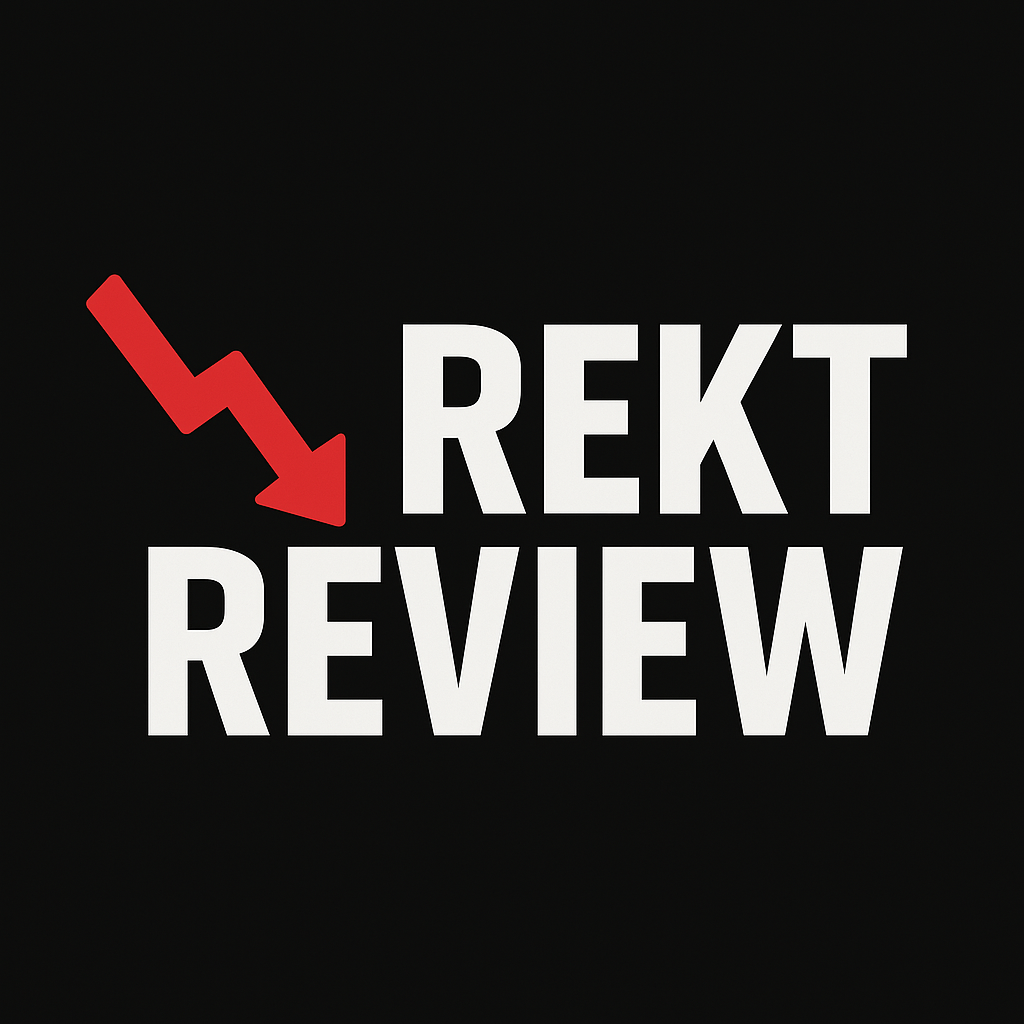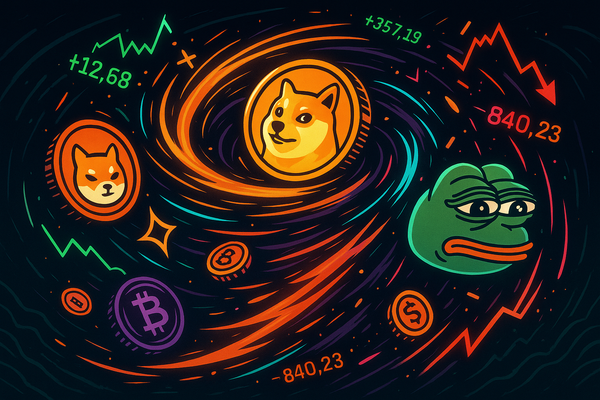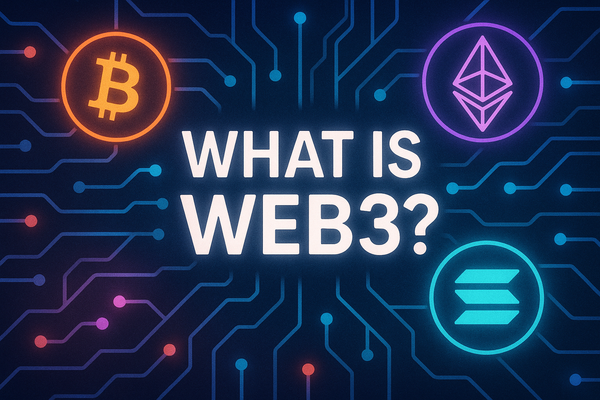What is Blockchain? A Complete Guide to the Technology Behind Crypto
A clear and beginner-friendly breakdown of what blockchain technology is, how it works, and why it's transforming industries—from finance to healthcare and beyond.

Blockchain technology is one of the most revolutionary innovations of the 21st century, reshaping how we think about data, trust, and digital ownership. Originally designed as the underlying system behind Bitcoin, blockchain has since evolved far beyond cryptocurrency. Today, it's used in industries ranging from finance and healthcare to logistics and government services.
At its core, blockchain is a decentralized digital ledger that records transactions across multiple computers. This structure eliminates the need for central authorities and ensures that records are transparent, secure, and tamper-proof. But despite its growing relevance, blockchain remains a confusing and often misunderstood concept for many.
In this article, we'll break down what blockchain really is, how it works, and why it's being adopted across the globe. From its fundamental components to real-world applications, this guide will give you a clear, jargon-free understanding of the technology — and why it’s more than just a buzzword.
Understanding Blockchain Technology
At its most basic level, a blockchain is a type of database — but unlike traditional databases, it doesn’t rely on a central server. Instead, blockchain operates as a decentralized ledger, distributed across a network of computers (called nodes) that each maintain a synchronized copy of the data.
The term “blockchain” comes from the way data is structured: in blocks that are chronologically linked or “chained” together. Each block contains a batch of transactions, a timestamp, and a cryptographic hash of the previous block. This design ensures the data is immutable — once something is recorded, it cannot be altered without changing every subsequent block across the entire network, which is practically impossible.
One of the most important features of blockchain is transparency. Because every participant in the network has access to the same version of the data, there's no single point of failure or manipulation. This trustless system allows people who don’t know or trust each other to collaborate and transact securely.
Finally, decentralization is what makes blockchain fundamentally different from conventional systems. No single entity controls the network, which reduces the risk of censorship, fraud, and data breaches. Instead, consensus mechanisms — such as Proof of Work or Proof of Stake — are used to validate new data entries democratically.
How Does Blockchain Work?
Blockchain works by organizing data into discrete units called blocks, which are linked together in chronological order to form a chain. Each block contains three key components: a list of transactions, a timestamp, and a cryptographic hash of the previous block. This hash acts like a digital fingerprint, uniquely identifying the block and securing its place in the chain.
When a new transaction is initiated—such as sending cryptocurrency or updating a supply chain record—it is broadcast to a network of computers, or nodes. These nodes then verify the transaction using a consensus mechanism. The two most common methods are Proof of Work (PoW) and Proof of Stake (PoS). PoW requires participants (miners) to solve complex mathematical puzzles, while PoS selects validators based on the amount of cryptocurrency they hold and are willing to “stake” as collateral.
Once verified, the transaction is bundled with others into a new block. This block is then added to the blockchain and propagated across the network so every node has an updated copy. Because each block references the one before it, changing any data retroactively would require altering every subsequent block on every node—an almost impossible task without controlling the majority of the network.
This combination of cryptography, distributed storage, and consensus ensures that blockchain data remains secure, tamper-resistant, and highly reliable, even without a central authority.
Types of Blockchains
Not all blockchains function the same way. Depending on the use case and governance model, blockchains can be classified into three main types: public, private, and consortium.
Public blockchains are open to anyone. They are fully decentralized, permissionless networks where anyone can participate as a user, miner, or developer. Examples include Bitcoin and Ethereum. These blockchains prioritize transparency and censorship resistance, making them ideal for open financial systems and decentralized applications. However, they can face scalability issues and slower transaction speeds due to the high level of network participation.
Private blockchains, on the other hand, are controlled by a single organization or entity. Access is restricted, and only authorized participants can read, write, or validate transactions. These blockchains are commonly used in enterprise environments for internal processes like auditing, compliance tracking, or supply chain coordination. While they offer more efficiency and control, they sacrifice decentralization.
Consortium blockchains fall somewhere in between. They are governed by a group of organizations rather than a single entity. Permissions are shared among trusted parties, and consensus is reached collaboratively. This model is often used in industries like banking or healthcare, where multiple stakeholders need to share data without exposing it to the public.
Each type of blockchain comes with trade-offs in transparency, control, scalability, and trust, depending on the application.
Real-World Applications of Blockchain
Blockchain technology is no longer limited to cryptocurrencies—it’s now being applied across a wide range of industries to improve transparency, efficiency, and trust.
Finance was the first major sector disrupted by blockchain. Cryptocurrencies like Bitcoin and Ethereum offer alternatives to traditional banking, while decentralized finance (DeFi) platforms allow users to lend, borrow, and trade without intermediaries. Cross-border payments are also faster and cheaper thanks to blockchain-based remittance services.
Supply chain management has seen major improvements using blockchain. Companies can track goods from production to delivery in real time, with every step recorded on an immutable ledger. This reduces fraud, prevents counterfeiting, and improves transparency, especially in industries like pharmaceuticals, food, and luxury goods.
Healthcare is using blockchain to secure and streamline medical records. Patient histories can be stored on a distributed ledger, accessible only to authorized providers. This ensures data privacy while reducing errors and redundant tests. It also helps in the secure sharing of research data between institutions.
Voting systems are exploring blockchain to combat election fraud and improve transparency. A blockchain-based voting system can ensure that each vote is verified, counted accurately, and stored immutably—boosting trust in the democratic process.
Other applications include digital identity verification, intellectual property rights management, and real estate transactions. As adoption grows, blockchain is proving to be a versatile tool capable of transforming legacy systems across the board.
Advantages and Challenges
Blockchain offers several key advantages that make it attractive across industries—but it also comes with significant challenges that must be addressed for mainstream adoption.
Advantages
One of blockchain’s greatest strengths is security. By using cryptographic algorithms and decentralized validation, blockchains make it extremely difficult for malicious actors to alter past data or commit fraud. This tamper-resistance is crucial in sectors like finance, supply chains, and healthcare.
Another major benefit is transparency. Public blockchains allow anyone to view transaction histories, increasing accountability and reducing the need for trust between parties. Even in private or consortium settings, shared ledgers improve auditability and reduce errors.
Cost savings are also a key benefit. By eliminating intermediaries, streamlining processes, and automating record-keeping through smart contracts, businesses can reduce operational expenses and processing times.
Challenges
Despite its benefits, blockchain still faces several obstacles. One is scalability. Popular blockchains like Bitcoin and Ethereum can struggle with network congestion and high fees during peak usage, limiting their capacity for mass adoption.
Another concern is regulatory uncertainty. Governments are still developing legal frameworks around blockchain, and unclear rules can deter innovation or raise compliance risks.
Finally, energy consumption is a pressing issue for blockchains that use Proof of Work. These systems require enormous computing power, raising environmental and sustainability concerns. While newer models like Proof of Stake address this, adoption is still in progress.
Addressing these challenges will be critical as blockchain continues to evolve.
Future of Blockchain Technology
Blockchain is still in its early stages, but the pace of innovation suggests a transformative future. As the technology matures, it's expected to become more scalable, user-friendly, and deeply integrated into everyday systems.
One major area of growth is the development of decentralized applications (dApps)—tools and platforms that operate on blockchain networks without centralized control. These are already gaining traction in finance, gaming, and social media, offering users more control over their data and digital assets.
Another trend is the integration of blockchain with other emerging technologies, such as the Internet of Things (IoT) and artificial intelligence (AI). For example, IoT devices can use blockchain to record data securely and autonomously, improving supply chain automation and asset tracking.
Smart contracts will also evolve, enabling more complex and dynamic agreements that execute automatically. As legal frameworks begin to recognize and support blockchain-based contracts, they could streamline everything from insurance claims to real estate deals.
Long-term, blockchain could underpin digital identity systems, national voting platforms, and global financial infrastructure. Its success will depend on solving current challenges and building interfaces that make the technology accessible to non-technical users.
What is Blockchain? FAQ
A blockchain is a decentralized digital ledger that records transactions across multiple computers, ensuring security and transparency without relying on a central authority.
Traditional databases are centralized, while blockchains are distributed across networks. Blockchains offer greater transparency and are designed to prevent tampering with historical data.
Blockchain is used in finance, healthcare, supply chain management, real estate, and even voting systems to improve security, efficiency, and trust.
While blockchain offers strong security through cryptography and decentralization, it’s not immune to vulnerabilities, especially in surrounding systems like wallets or exchanges.
Yes. Many blockchains are used purely for data management, authentication, or automation—no cryptocurrency required.





